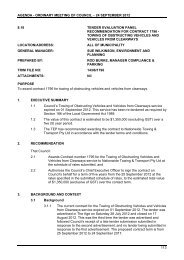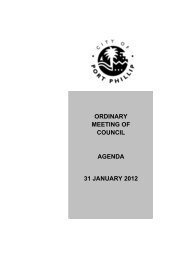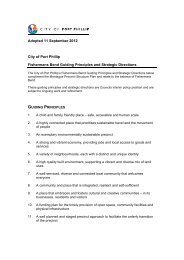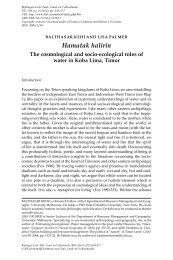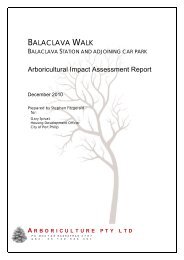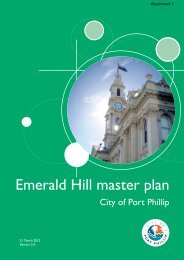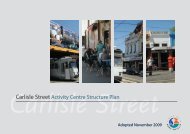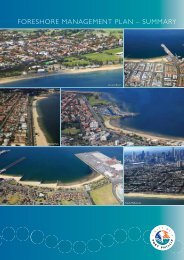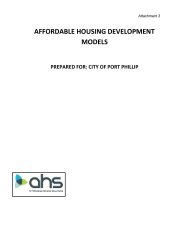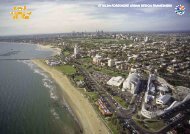Review of Heritage Overlay 1 Port Melbourne ... - City of Port Phillip
Review of Heritage Overlay 1 Port Melbourne ... - City of Port Phillip
Review of Heritage Overlay 1 Port Melbourne ... - City of Port Phillip
You also want an ePaper? Increase the reach of your titles
YUMPU automatically turns print PDFs into web optimized ePapers that Google loves.
<strong>Port</strong> <strong>Phillip</strong> <strong>Heritage</strong> <strong>Review</strong>, Version 14, 2009 64<br />
Prepared for the <strong>City</strong> <strong>of</strong> <strong>Port</strong> <strong>Phillip</strong> by Andrew Ward, Architectural Historian<br />
Statement <strong>of</strong> Significance: The <strong>Port</strong> <strong>Melbourne</strong> Area encompasses the long established residential<br />
and commercial streets <strong>of</strong> <strong>Port</strong> <strong>Melbourne</strong> commencing at Pickles Street in the south and finishing at<br />
Clark Street in the north. It has historical importance (Criterion A) as a nineteenth century working<br />
class area associated with the growth <strong>of</strong> the <strong>Port</strong> <strong>of</strong> <strong>Melbourne</strong> and especially the bayside shipping<br />
activities <strong>of</strong> the port and with the industrial development <strong>of</strong> the shore line last century and the Yarra<br />
River flats this century. This importance is demonstrated not only by the housing stock and<br />
surviving industrial establishments but also by the diversity <strong>of</strong> commercial and public buildings<br />
within the Area. The Area is especially valuable for its capacity to demonstrate the life style <strong>of</strong> this<br />
close knit community during the nineteenth century. Being surrounded by industrial land, the Bay<br />
and the Lagoon reserves, the Area retains its discrete geographical form and has value for its<br />
capacity to demonstrate past urban planning practices characteristic <strong>of</strong> the pre-automobile age.<br />
These include the Bay street strip shopping centre, the railway gardens and other reserves, the status<br />
given to public buildings and public transport services and the mix <strong>of</strong> residential and non-residential<br />
uses wherein street corner sites are invariably occupied by hotels and shops establishing a distinctive<br />
streetscape pattern.<br />
Recommendations: Recommended for inclusion in the Schedule to the <strong>Heritage</strong> <strong>Overlay</strong> Table in<br />
the <strong>Port</strong> <strong>Phillip</strong> Planning Scheme<br />
Assessment: Andrew Ward, June, 1998.



